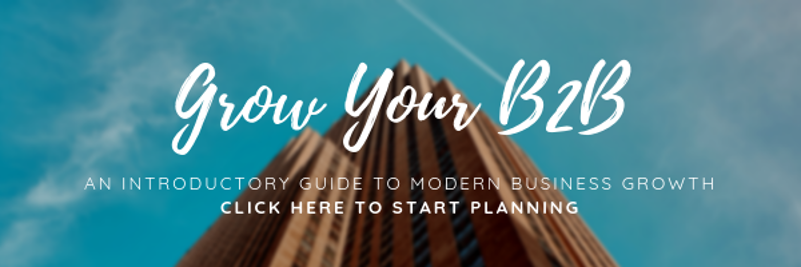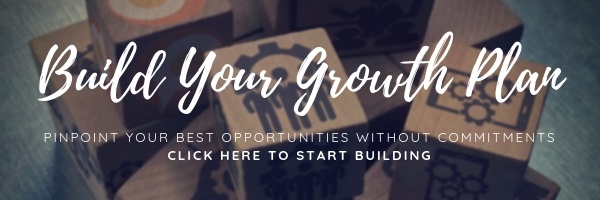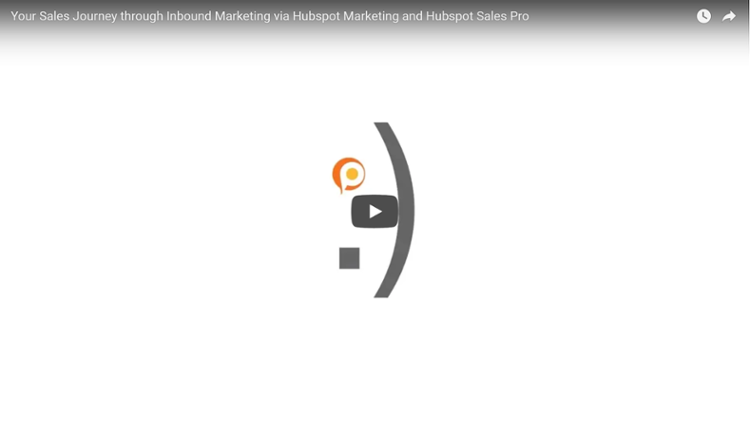Uncertain of whether you're going to hit your sales enablement targets?
(updated 1-4-2018) As a CEO, I can't think of anything less appealing than discussions about arbitrary KPIs.
Instead, let's talk about where you want to take your company, what obstacles are in your way, and what sales enablement workflow you're willing to put in place to accomplish your goals. Marketing will come.
Along the way, we'll establish a marketing growth strategy that fits your company.
Don't get ahead of yourself
This article will be most helpful to those who have already established their marketing objectives, and who are looking to specifically address their marketing funnel.
This means that you have already addressed your lowest hanging opportunities for growth marketing such as sales infrastructure, and sales enablement. If you haven't addressed those yet, I suggest putting a pin in your marketing objectives for now and focusing your attention there.
Considering sales infrastructure and sales enablement as something you do once you start generating more opportunities for your sales team would be a mistake. Infrastructure and enablement seal up your leaky pipeline while helping you knock out quick wins, and they're the first stop for anybody who is just getting started with making serious investments in sales or marketing.
Without infrastructure and enablement established, opportunities may be slipping through the cracks. Putting more money into a system that's losing viable opportunities can lead to even more missed opportunities.
Breaking it down
If your infrastructure and sales enablement departments are looking good, you can improve the overall effectiveness of your sales teams by investing in several key areas of marketing. Specifically, we're going to explore examples of marketing objectives related to the following:
- SEO
- Social media
- Blogging
- Website
- Content
Many of these are likely on your radar already or you may already be investing in them in some capacity. The key is knowing how to draw the most value from each one of them by stacking them in such a way that they help you achieve your ultimate growth goals. This isn't about creating marketing KPIs that fill us up with warm fuzzies. It's about creating an inbound marketing strategy with a path to success.
Download your free Introductory Guide to Growing Your Business:
Example #1: Generate website leads
What it consolidates:
There is nothing wrong with wanting to increase website traffic through SEO. In fact, there's nothing wrong with wanting to be a thought leader or to have more followers. Plus, organic brand awareness is a powerful thing.
However, these are milestones can be difficult to measure and quantify in a single silo. They're not strong examples of marketing objectives at the end of the day.
If you make "lead generation" your marketing objective, you have something tangible to work towards.
Most marketing leaders and business owners I speak to look at blogging as their preferred platform for "thought leadership."
In reality, it's also one of your best platforms for increasing traffic and one of the best lead generation services. If you're doing it right (hint: educating), it can have a tremendous impact.
If you're only doing it for "thought leadership," then how can you derive revenue? In some worlds—like public speaking—it's easy. For most of us, it's a product of "making it," not a stepping stool.
For most b2b businesses, you're going to want more than clicks and follows.
Example #2: Improve conversion rates
What it consolidates:
"Stronger engagement" is hard to measure, and I've seen a lot of different ways that people measure it:
- Bounce rates
- Average time on a particular page
- Exit rates
- Etc...
Maybe a page only keeps people there for 30 seconds, but maybe it's because they immediately find what they need... or maybe it's because the page sucks.
For this, we go back to our lead generation engine. What is the percentage of people visiting your website who submit a form and hand you their contact information? Whether 1% or 10%, a strong marketing objective example is to increase that number month-over-month and year-over-year.
How increased conversions improve branding:
- When we convert visitors into leads, we have permission to email them
- They will know all about your company before you call
- They're going to create parity between your business and good advice
Example #3: Marketing Qualified Leads
What it consolidates:
- Get more leads
- Email more
I like clumping these two old-school objectives together, because I have been asked for access to lead lists more times than worth counting.
In fact, I see a lot of marketing strategy from agencies selling the idea of building lead lists first and foremost. It's as if quality or engagement were suddenly meaningless. But for them, it's not about helping you close more deals; it's about hitting easy-to-understand marketing objectives.
But what I don't often hear is how "more leads" is going to generate more value.
Now, before you point out my initial marketing objective of generating website leads as a contradiction, let me explain the difference.
A "website lead" (or "inbound lead") is a contact who gives your company permission to market to them.
Sometimes it's through the "contact us" or assessment forms, but more often, they come from exchanging their contact information with you in order to gain access to something you gated online.
These leads are probably not ready to buy or make contact with live human beings yet.
They may get there at some point. It could be in 20 minutes... It may be several years... Not everybody is a perfect candidate for your solution at this exact moment. But by elongating the sales funnel, you'll end up with a much deeper, more predictable pipeline.
So, a FANTASTIC marketing objective example is one that focuses on generating MQLs:
Methods for achieving this goal:
- More bottom of funnel content conversions
- Higher email engagement (opens, clicks, website actions)
The MQL doesn't just have potential to buy, they are in the mood to buy.
I like to look at generating website leads as a great starting objective. Generating MQLs is step two.
Build Your Growth Plan in 5 Easy Steps:
Example #4: Sales Predictability
What it consolidates:
- More clients
- More $
- Get the phones to ring
Getting more clients and more revenue are fantastic goals, even with specific numbers in mind. I have those exact same things in mind when I get up every day and right before I go to bed at night.
But "more clients" by itself only solves today's problems, and it's not likely something you can rely on marketing to achieve by itself.
Marketing is a cog in the machine. It provides a functional purpose, but cannot close the deal by itself. So, as you work backwards from your revenue goals, make sure to consider how sales & marketing work together, and how they are responsible for different aspects of the overall process.
If you're thinking that this objective is better suited after making significant progress with MQL's, you are correct. This is the optimization phase.
So, the hierarchy goes like this:
- Generate leads
- Generate MQLs
- Create sales predictability
By installing an inbound lead generation mechanism, you can create predictability for many reasons:
- You will have leads coming in ALL the time - Your content offers never turn off, after all.
- You will see seasonal patterns emerge - With year over year data, you can make stronger projections.
- You will uncover market trends - Some things are going to grow in popularity while others sink. You'll also see how people's understanding of your services evolve over time.
Inbound doesn't magically create reasons for people to buy when they're not ready, but it does help you capture their attention when they're still vulnerable to new ideas... this is quite helpful as they go through their buyer's journey.
After a couple of seasons of this, you'll be able to see into the future... at least a certain piece of it.
Important milestones:
- Increase visitors-to-contacts conversions to at least 3%. That means for every 1,000 visitors, you'll end up with 30 potential leads, or for every 10,000 visitors, we get 300 potential leads
- Increase leads-to-customers ratio to 2 - 10%
CONCLUSION:
By stacking your marketing investments and expectations, you can grow your business in a manner that is controlled, sustainable, and very exciting.
Check out the video below, which illustrates the journey one goes through with inbound, infrastructure, and enablement:





